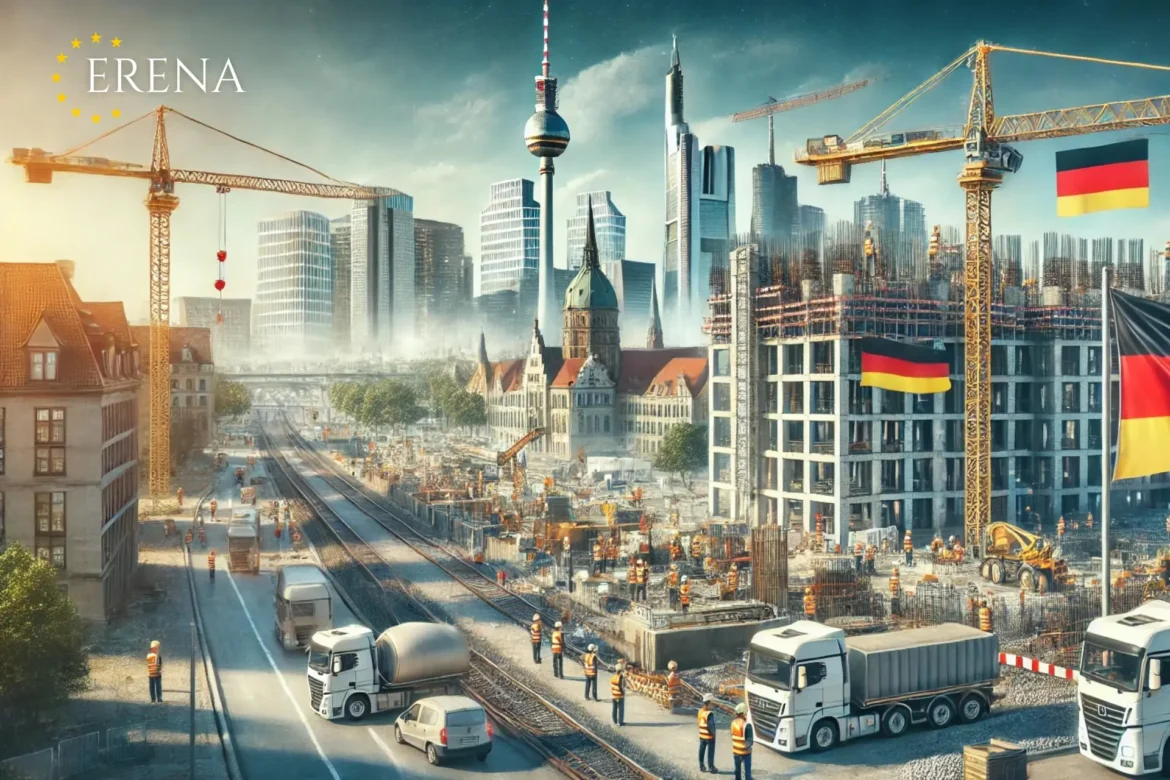General Overview of the Construction Sector in Germany
The construction industry in Germany is one of the most important and dynamically developing sectors in Europe. In 2025, the market continues to grow despite existing challenges such as economic instability, rising raw material costs, and a shortage of skilled labor. Nevertheless, significant government investments, digital technology advancements, and the trend towards eco-friendly construction help maintain a high pace of development.
Trends in the German Construction Market in 2025
1. Increased Demand for Housing
The housing shortage in major German cities such as Berlin, Hamburg, and Munich is driving active residential construction. In 2025, significant attention is given to creating affordable housing, reflected in large-scale projects for apartment buildings and townhouses. Additionally, rental housing is becoming increasingly popular, encouraging developers to build long-term rental complexes.
2. Development of Sustainable Construction
Green technologies are becoming a primary focus in the construction industry. In 2025, zero-carbon buildings, energy-efficient materials, solar panels, and water recycling systems are actively being implemented. Government programs incentivize eco-friendly construction by offering tax benefits for energy-efficient projects.
3. Digitalization and Innovation
Modern technologies are making construction processes more efficient and cost-effective. Germany is actively implementing digital building models (BIM), automation of construction processes, and robotic systems. 3D printing of buildings is also gaining popularity, reducing material costs and shortening project timelines.
4. Shortage of Building Materials and Rising Costs
Despite the development of domestic production, Germany continues to experience difficulties with the supply of construction materials. Rising prices for metal, cement, and wood put pressure on the market. However, German companies are finding solutions by increasing the use of recycled materials and implementing new cost-optimization methods.
5. Government Initiatives and Infrastructure Projects
The German government actively supports the construction sector by allocating substantial investments for the modernization of transport infrastructure, road and bridge construction, and public buildings. In 2025, the development of railway hubs and urban transport continues, contributing to the improvement of urban environments.
Development of Residential Construction
Residential construction in Germany remains a priority. In the context of high urbanization, new residential areas are being created, and old neighborhoods are being redeveloped. Key directions include:
• Development of energy-saving housing using smart technologies.
• Construction of affordable housing for young professionals and families with children.
• Modular and prefabricated construction, reducing project implementation timelines.
Additionally, comprehensive development of residential districts is emphasized—new neighborhoods are designed with social infrastructure, green areas, and convenient transport links in mind.
Growth of Commercial Construction
The commercial real estate sector is also actively developing. In 2025, there is an increase in the number of business centers, logistics complexes, and retail spaces. Key priorities include:
• Creation of energy-efficient office buildings using renewable energy sources.
• Development of modern logistics centers with automated management systems.
• Transformation of old industrial sites into modern business spaces.
Furthermore, trends indicate an increasing demand for flexible office spaces and coworking areas, driven by changes in corporate work formats post-pandemic.
Infrastructure Development Projects
Infrastructure projects remain a crucial part of Germany’s construction sector. Government investments are directed towards:
• Construction of new highways and transportation hubs.
• Development of public transport, including railway networks and tram routes.
• Modernization of water treatment and energy facilities.
Increasing attention is being given to the creation of pedestrian zones, bicycle paths, and urban greening, aligning with the concept of sustainable urban development.
The Construction Industry and New Technologies
Technological innovations continue to have a significant impact on the construction market. In 2025, the following technologies are widely used:
• BIM (Building Information Modeling) – digital building models that reduce errors in the design phase.
• 3D printing – technology simplifying the production of construction elements and reducing costs.
• Robotic construction – automated mechanisms replacing manual labor and increasing precision in construction work.
• Smart buildings – automated energy and climate control systems.
The use of these technologies helps construction companies save resources and enhance building quality.
Challenges and Prospects for the Construction Market
Despite its active growth, Germany’s construction sector faces several challenges:
• Rising raw material and construction costs.
• Shortage of skilled labor.
• Stricter environmental standards.
However, government support, digitalization, and the adoption of new technologies create favorable conditions for further sector development. In the coming years, the market is expected to continue adapting to changes and demonstrating stable growth.
In 2025, Germany’s construction sector remains highly active despite global economic challenges. The key trends include digitalization, sustainable construction, and government-backed infrastructure projects. The adoption of innovative technologies and smart solutions makes the German market one of the most advanced in Europe. It is anticipated that in the coming years, the industry will maintain a high level of activity, ensuring growth in both residential and commercial segments.
Construction Activity in the German Market in 2025
1.2K

